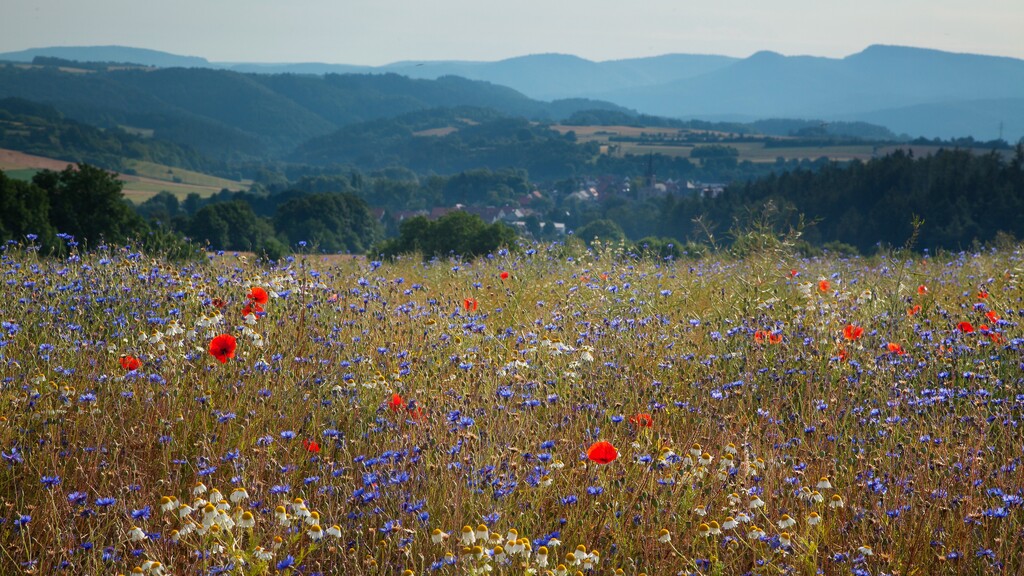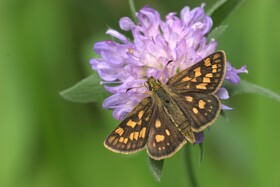

Naturefund would love Wiesbaden to hum again. We want to buy several square meters of arable land in Wiesbaden and transform them into a buzzing insect paradise. With fruit trees, pastures and a flower meadow, these fields would be like playgrounds for wild bees, butterflies, beetles and more.

Start: April 2018
End: still open
Wiesbaden-Naurod und Wiesbaden-Rambach
Currently: 10.000 m²
Naturefund lends a hand in this project. With the support of many farmers, volunteers, the Geisenheim University of Applied Sciences and our own Naturefund team, we are transforming the areas step by step into insect paradises.

In the north of Wiesbaden, one of the foothills of the Taunus, there is a lot of forest and a lot of field, but flowers. Monotonous fields with grain, oilseed rape or corn, alternating with dense forests.
It blooms only a few weeks a year. For the rest of the year, wild bees, butterflies and many other insects dont find food. The flowers disapear and together with the birds, which lived from them. The landscape is getting poorer.
Last year, Naturefund came into contact with an owner who would like to pass on her long-held landed property to fields and meadows to nature.Spread over the districts of Wiesbaden Rambach and Naurod, she wants to sell us 55,000 m², which we can take for butterfly and Co. from the intensive agricultural use.
The plots are very diverse.On a beautiful orchard with over 60 trees we have already encountered various woodpeckers, several fields offer wonderful opportunities to enrich the cleared landscape around it by hedges and flowering.The purchase of two brooks opens up the possibility of natural renaturation of the brooks through this purchase.
The flowering meadows of Wiesbaden can make our landscape a biodiversity hotspot with its structural diversity, colorful flowers and buzzing insects.
Therefore, we want to start in Wiesbaden-Rambach with 10,000 m² of arable land to set up flowering areas, orchards and hedges and build dry stone walls here.Our goal is to provide food, shelter and breeding quarters for many endangered insects throughout the year.We also want to plant salami (Salix caprea) and save old, almost dilapidated fruit trees, which are an ideal bee pasture with their many flowers and a valuable habitat for rare butterflies.
Read here what others have written about the project.
Sorry, there is no comment for this project yet. Write the first one!